Optimizing long-acting injectable antipsychotic safety and care continuity through documentation best practices
- PMID: 40958797
- PMCID: PMC12434062
- DOI: 10.3389/fpsyt.2025.1659290
Optimizing long-acting injectable antipsychotic safety and care continuity through documentation best practices
Abstract
Background: Long-acting injectable antipsychotics (LAI-APs) are vital for managing psychiatric conditions, particularly in patients with adherence challenges. However, errors in medication reconciliation, prescribing, preparation, and administration, often stemming from documentation lapses and communication breakdowns, may result in an increased risk of relapse or readmission. Despite their widespread use, standardized documentation practices remain underdeveloped.
Objective: To identify documentation insufficiencies related to LAI-AP use across healthcare settings and propose best practice recommendations to improve safety and care continuity.
Methods: A comprehensive review of literature using PubMed, Google Scholar, current clinical guidelines, and gray literature was conducted to identify safety concerns and documentation gaps related to LAI-APs. Search terms included "LAI antipsychotic medication errors," "documentation," "safety," "mental health," and "medication reconciliation." Further articles were identified through a scan of the references cited within the initial sources. From this analysis, a series of best practice recommendations were developed targeting key aspects of LAI-AP use, with a focus on practical implementation strategies.
Results: Limited literature is available on errors related to LAI-AP with minimal detail on documentation strategies to address these. By reviewing reports, extrapolating recommendations from their oral antipsychotic counterparts, and analyzing potential risk factors unique to the behavioral health setting, key documentation gaps were identified across the LAI-AP use process. These include deficiencies in medication reconciliation-especially related to last doses and oral overlap-along with inconsistencies in prescribing practices, patient education, preparation, administration, and transitions of care. Inadequate documentation contributes to missed or duplicate doses, incorrect administration techniques, and poor coordination between settings. Our findings indicate the need for standardized order sets, readily accessible documentation of initiation or discontinuation reasoning, integration of therapeutic drug monitoring and symptom tracking tools, structured patient education, and formalized transitions of care procedures.
Conclusions: Enhancing documentation throughout the LAI-AP care continuum is crucial to reduce medication errors and improve patient outcomes. The proposed framework offers practical steps for clinicians and health systems to standardize documentation, improve communication during care transitions, and promote safer LAI-AP use. Innovations such as national electronic health records, EHR-integrated LAI-AP registries, and smartphone apps could facilitate cross-setting communication, patient engagement, and error reduction. Addressing systemic barriers will require policy-level reform.
Keywords: EHR interoperability; antipsychotic depots; best practices; documentation; long-acting injectable antipsychotics; medication reconciliation; psychiatric medication safety; transitions of care.
Copyright © 2025 Throneberry, Burk and Pruett.
Conflict of interest statement
The authors declare that the research was conducted in the absence of any commercial or financial relationships that could be construed as a potential conflict of interest.
Figures


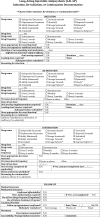
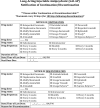
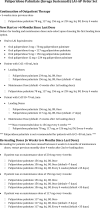
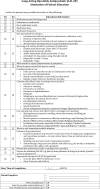
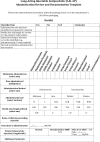
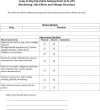
References
-
- Besana F, Civardi SC, Mazzoni F, Carnevale Miacca G, Arienti V, Rocchetti M, et al. Predictors of readmission in young adults with first-episode psychosis: A multicentric retrospective study with a 12-month follow-up. Clin Pract. (2024) 14:1234–44. doi: 10.3390/clinpract14040099, PMID: - DOI - PMC - PubMed
-
- Martiadis V, Pessina E, Raffone F, Martini A, Di Vincenzo M, Della Rocca B, et al. Efficacy and safety of adjunctive aripiprazole lai or paliperidone lai for the management of patients suffering from bipolar I disorder with comorbid obsessive-compulsive disorder. J Clin Med. (2025) 14(3):954. doi: 10.3390/jcm14030954, PMID: - DOI - PMC - PubMed
Publication types
LinkOut - more resources
Full Text Sources
Miscellaneous

